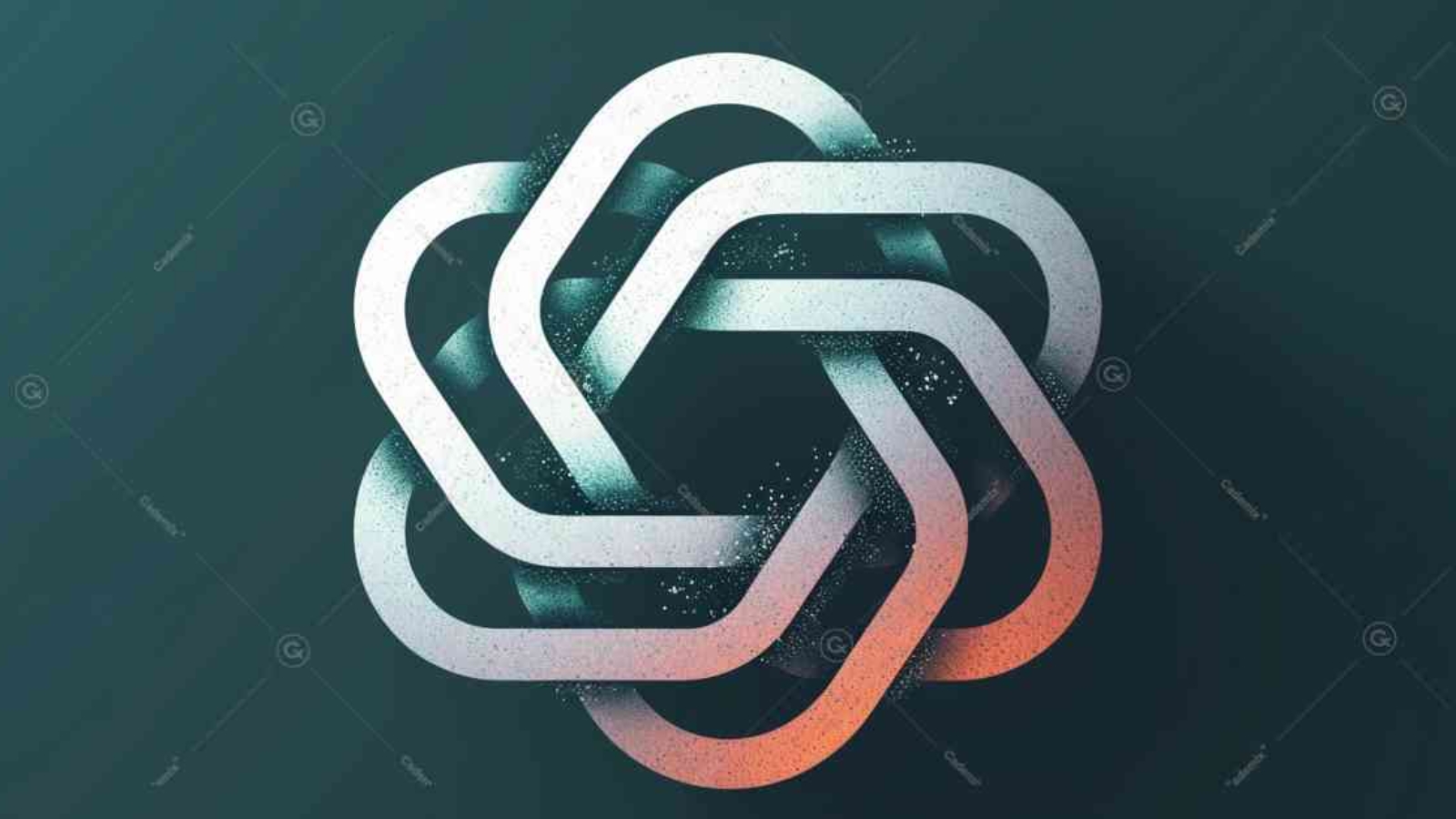Estimated Reading Time: 16 minutesA comprehensive post-event evaluation is essential in event management, as it enables continuous improvement, optimizes future event planning, and ensures stakeholder satisfaction by analyzing feedback, metrics, and trends
Psychological Factors in Digital Marketing: How Social Media Influences Purchasing Decisions
This article delves into the psychological underpinnings that shape consumer behavior in the context of digital marketing, with a particular focus on social media platforms. It examines how various cognitive and emotional triggers—including social proof, scarcity, personalization, and trust signals—can influence the way users interpret advertisements and make purchasing decisions. Drawing on a range of marketing and behavioral science principles, the discussion highlights both the opportunities and potential ethical pitfalls of harnessing psychological drivers to sway audiences. Real-world examples illustrate how brands engage followers through well-crafted messages, storytelling techniques, and influencer collaborations. The article closes by offering best practices for achieving marketing goals without compromising consumer well-being or trust. Marketers and business owners alike can benefit from understanding these foundational principles to design strategies that resonate with audiences, foster loyalty, and responsibly leverage the power of social media.
By Samareh Ghaem Maghami, Cademix Institute of Technology
Table of Contents
Introduction
The digital landscape has evolved dramatically over the past decade, reshaping how consumers interact with brands. Social media platforms—ranging from Facebook and Instagram to LinkedIn and TikTok—are no longer merely channels for personal connections; they have become powerful marketplaces where businesses can directly engage prospective buyers. This transformation has brought with it a deeper reliance on psychological triggers that influence attention, interest, and, ultimately, purchasing behavior.
Brands now have a plethora of tools at their disposal, from precise targeting algorithms to data analytics, enabling them to tailor messages to specific demographic and psychographic segments. This capacity to reach consumers “where they are” has amplified the importance of understanding the psychological mechanisms at play. While traditional advertising might have relied heavily on persuasive copy or eye-catching visuals, digital marketing must account for real-time feedback loops, ongoing audience interaction, and the swift propagation of trends.
Understanding these psychological factors is essential not only for optimizing campaigns but also for maintaining ethical standards. Tactics that exploit vulnerabilities—such as fear of missing out or social comparison—can backfire if perceived as manipulative. Hence, the social media age calls for a nuanced balance: leveraging core principles of behavioral psychology while respecting consumer autonomy. Within this article, readers will encounter a comprehensive overview of the key psychological drivers that can make or break a digital marketing campaign. The goal is to provide a framework for designing strategies that resonate emotionally and cognitively, encouraging sustainable, trust-based relationships between brands and their audiences.
The Role of Social Media in Consumer Behavior
Social media platforms serve as digital ecosystems where users not only consume content but also participate in creating and sharing it. This environment enables a constant interplay of information, social validation, and feedback, making it fertile ground for marketing efforts that tap into fundamental human needs—such as belonging, self-expression, and esteem.
In a traditional marketing funnel, awareness, interest, decision, and action were often delineated stages. Now, these stages can merge or even overlap in real time. A single post shared by an influential figure might spark immediate consumer action, bypassing the usual extended deliberation periods. Alternatively, a well-crafted comment section might prolong a user’s interest, allowing them to gather social proof from peers before making a purchase.
The shift toward digital-first advertising has also democratized marketing to some extent, enabling smaller businesses to compete with global brands if they can create engaging, shareable content. However, the challenge lies in understanding the psychological currents beneath the surface—why do certain memes go viral, while other well-crafted campaigns languish in obscurity? Often, it is the alignment with basic social and emotional drivers that propels a message to mass visibility.
Beyond virality, social media fosters a sense of community among consumers who identify with certain brands or lifestyles. These “brand communities” can become powerful advocacy networks, championing products or services based on genuine enthusiasm rather than purely transactional motives. Yet, this enthusiasm can be fragile. Instances of perceived deception, unethical data usage, or tone-deaf messaging can quickly erode trust and lead to public backlash.
Recognizing the magnitude of influence wielded by social media, marketers strive to refine strategies that resonate on both a rational and emotional level. The following sections unpack the core psychological drivers that fuel these strategies, clarifying why certain approaches succeed and how brands can remain mindful of ethical considerations while harnessing them.
Core Psychological Drivers
Cognitive and emotional processes guide how people perceive, interpret, and respond to marketing messages. Though these processes are universal, social media environments amplify their effects. By understanding these drivers, brands can craft campaigns that align with human tendencies, rather than working against them.
Curiosity and Novelty
Human beings are wired to seek new experiences and information. On social media, the endless scroll of fresh content feeds this desire for novelty. Marketers can harness curiosity by introducing intriguing headlines, preview snippets, or “teaser” visuals that pique interest. Whether it is the promise of behind-the-scenes revelations or limited-edition releases, triggering curiosity can lead to higher engagement and eventually a conversion.
Personalization and Self-Relevance
Personalization taps into the innate desire to feel special and understood. Custom product recommendations, dynamic ads, and relevant content curated by data analytics can create the impression of a one-on-one dialogue between brand and consumer. When users see content specifically aligned with their interests or past behaviors, they are more likely to engage and trust the source. Overuse or inaccurate personalization, however, can feel invasive, highlighting the delicate balance between relevance and intrusion.
Emotional Resonance and Storytelling
Stories activate parts of the brain associated with emotion, empathy, and even motor responses. This is why an emotional story—be it of triumph, struggle, or hope—can resonate more deeply than a straightforward sales pitch. On social media, successful campaigns often revolve around narratives that connect with shared values or aspirations. For instance, a brand championing environmental sustainability can evoke pride, urgency, or compassion, compelling consumers to support the cause by purchasing or endorsing the product.
Loss Aversion and Scarcity
People tend to fear losses more than they value gains. This bias manifests in marketing as the power of “limited-time offers” or “exclusive deals.” When individuals believe they might miss out on a unique opportunity or a finite product, they are spurred to act faster. Platforms like Instagram often amplify this scarcity principle through time-sensitive stories or countdown stickers, creating a real sense of urgency in the consumer’s mind.
Social Norms and Peer Influence
Humans are inherently social creatures, heavily influenced by perceived norms and the opinions of others. The digital equivalent of “keeping up with the Joneses” can be seen when users see their peers endorsing or using certain products and feel an urge to conform. Algorithms that show user likes, shares, or comments reinforce this dynamic. The fear of social exclusion or disapproval can play as much a role in decision-making as genuine product interest.
Habit Formation and Continuous Usage
Social media platforms often build features that encourage recurring interactions, from daily streaks to push notifications. This continuous engagement can create a habit loop—trigger, routine, reward—where the user returns to the app multiple times a day. Marketers who align their strategies with these habit loops have repeated opportunities to communicate with consumers. However, the challenge is to maintain authenticity and relevance; oversaturation or spam-like behavior can erode trust and lead to unfollows or ad fatigue.
Authority and Expert Endorsement
People are more likely to trust a source they perceive as an authority, whether it is a well-known brand, a recognized expert, or a celebrity. On social media, authority can be demonstrated by follower count, verified badges, or the display of professional credentials. Collaborations between brands and respected figures can lend credibility to a campaign, but authenticity remains paramount. A mismatch between the authority figure’s reputation and the brand’s values can evoke skepticism rather than trust.
Social Proof and Influencer Marketing
Social proof is a cornerstone of consumer psychology: when individuals observe others engaging in a particular behavior, they are likelier to follow suit. On social media, platforms that publicly display likes, comments, and shares provide instant social proof. Positive reviews, user-generated content, and testimonials serve as additional layers of validation that can significantly impact purchasing decisions.
User-Generated Content and Community Involvement
Inviting consumers to share their experiences or results—through photos, reviews, or testimonials—can create powerful endorsements that resonate with potential buyers. For instance, a fitness brand might encourage users to post workout selfies or transformation stories, fostering a sense of camaraderie and authenticity that is hard to replicate with traditional ads. This collective storytelling also feeds into the psychological need to belong, making the brand feel more like a community than a corporate entity.
Influencer Collaborations and Authentic Engagement
Influencer marketing has grown into a multi-billion-dollar industry, thanks to the potent mix of trust, relatability, and aspirational appeal that influencers can offer. When followers see an influencer they admire using or recommending a product, they perceive it as social proof. The best partnerships are those in which the influencer’s personal brand aligns closely with the product or service. A mismatch—such as a vegan influencer promoting a leather goods brand—risks backlash and undermines consumer trust.
Micro vs. Macro Influencers
The distinction between micro-influencers (smaller audience, often niche topics) and macro-influencers (very large following, mainstream appeal) hinges on reach versus intimacy. Micro-influencers tend to have high engagement rates and a close relationship with their audience, which can yield more authentic conversations and stronger influence on purchasing decisions. Macro-influencers or celebrities, on the other hand, might offer massive visibility but risk coming across as less personal. Marketers must weigh these trade-offs in designing their influencer strategies.
The Ethical Dimension
While social proof and influencer marketing are potent, marketers must navigate ethical considerations. Disclosures and transparency are key. Audiences are increasingly savvy about sponsored posts and can become cynical if they sense hidden agendas. Clear labeling of promotions and open acknowledgment of partnerships help preserve trust. Overly aggressive social proof techniques—such as faking likes or reviews—can lead to damaging public relations incidents, legal penalties, and long-term harm to a brand’s reputation.
Strategies for Ethical and Effective Marketing
Creating campaigns that respect consumer autonomy and well-being is not just a moral imperative; it also supports long-term brand loyalty. Tactics perceived as manipulative or exploitative might provide short-term gains but can degrade trust over time. By focusing on authenticity, transparency, and value-driven engagement, brands can build lasting relationships in a crowded digital marketplace.
Aligning with Core Values
Brands that articulate clear mission statements and corporate social responsibility initiatives often resonate more deeply with consumers who share those values. Whether it is sustainability, diversity and inclusion, or community building, integrating such values into content helps forge emotional connections. A campaign that genuinely aligns with these commitments will ring true, while one that merely pays lip service to popular causes may be dismissed as performative.
Storytelling with Purpose
Emotional narratives work best when they serve a genuine purpose rather than simply pulling at heartstrings to drive sales. Highlighting real customer stories or showcasing behind-the-scenes product development processes can offer transparency and forge trust. Audiences increasingly appreciate the chance to see the “human side” of a brand. This authenticity can be a powerful differentiator in a sea of polished but impersonal ads.
Interactive and Gamified Experiences
Some brands introduce polls, quizzes, or mini-challenges that invite active user participation. This approach can harness intrinsic motivators like curiosity, mastery, or competition. Gamified elements inject fun into the consumer journey, transforming what might otherwise be a passive advertising experience into something memorable. Careful design ensures that these elements enhance user engagement without resorting to manipulative tactics.
Building Communities and Fostering Dialogue
Instead of one-way broadcasting of promotional material, savvy brands host events like live streams or Q&A sessions, encouraging real-time interaction. This type of reciprocal communication fosters loyalty by making consumers feel heard and valued. It also generates user-generated content that can serve as social proof. However, brands must be prepared for transparent conversations, including constructive criticism, and handle such feedback with openness and respect.
Data-Driven Personalization with Consent
Data analytics allow for finely tuned personalization, but marketers must secure informed consent and protect user data diligently. Being transparent about data collection practices and offering clear opt-out mechanisms is vital in safeguarding consumer trust. Personalized ads that respect boundaries and stay relevant to user interests can lead to more positive brand associations than generic, scattershot campaigns.
Customer Support and Post-Purchase Engagement
The marketing journey does not end once a consumer makes a purchase. Follow-up messages, customer support interactions, or community spaces dedicated to product usage tips can all reinforce a positive experience. Responsive customer service channels on social media, such as dedicated Twitter accounts or Facebook Messenger bots, enable quick problem resolution and demonstrate a brand’s commitment to its audience.
Evaluating Performance and Iterating Responsibly
Metrics like click-through rates, conversion rates, and return on ad spend offer valuable insights, but they do not always tell the full story. Monitoring sentiment, brand mentions, and customer feedback can reveal whether campaigns resonate positively or provoke a negative reaction. Regularly iterating on strategies based on both quantitative and qualitative data helps maintain a dynamic yet consumer-friendly approach.
Conclusion
Social media’s role in digital marketing transcends mere advertising channels, weaving itself into the very fabric of consumer identity, community, and decision-making. By tapping into core psychological principles—such as social proof, scarcity, and emotional resonance—brands can more effectively capture attention, foster trust, and drive purchasing behaviors. The digital realm’s interactive nature presents both unprecedented opportunities and ethical obligations. As technology continues to evolve, marketers must remain vigilant about respecting user autonomy and building genuine relationships rather than relying solely on short-term manipulations.
In this environment, authenticity emerges as the ultimate differentiator. Campaigns that balance persuasion with respect, storytelling with transparency, and data-driven insights with privacy considerations are likely to stand out in a saturated market. Understanding the psychological dimension of consumer behavior equips businesses with a powerful toolkit for connecting with audiences on a deeper level. Yet, with great power comes great responsibility: those who deploy these strategies ethically will shape a future of digital marketing that is not only effective but also beneficial for brands and consumers alike.
International Applicants in Europe: Psychological Barriers and Adaptation Strategies
This article explores the unique psychological barriers faced by international applicants seeking opportunities in Europe, focusing on the job market, higher education, and broader societal integration. By examining factors such as culture shock, identity negotiation, and communication styles, readers gain insight into the core challenges that newcomers encounter. The article discusses evidence-based strategies—ranging from mindset shifts to practical interventions—that can help individuals adapt, succeed, and thrive. In addition, it emphasizes the reciprocal benefits for both organizations and international professionals, highlighting how diverse workforces and inclusive policies lead to improved creativity and resilience. The final sections consider communication best practices, the role of cultural intelligence, and the impact of supportive communities. In closing, this article aims to offer a comprehensive perspective on how international applicants can overcome psychological hurdles while maximizing their contributions within Europe’s dynamic and multicultural landscape.
By Samareh Ghaem Maghami, Cademix Institute of Technology
Table of Contents
1. Introduction: Understanding the European Context
1.1. The Evolving European Landscape
Europe has long been a hub of cultural exchange, economic opportunities, and educational excellence. Over the past few decades, the continent has witnessed significant socioeconomic shifts that have opened its borders to a growing number of international applicants seeking professional or academic opportunities. With the expansion of the European Union (EU), cross-border collaboration has increased, creating a diverse tapestry of nationalities, cultures, and languages.
From tech startups in Berlin to multinational corporations in London and research institutes in Paris, opportunities abound for international professionals who bring unique perspectives and skill sets. Yet, despite the attractive prospects, newcomers frequently face challenges beyond the usual logistical hurdles of visas, housing, and administrative paperwork. These challenges often stem from psychological and cultural factors that can deeply influence one’s ability to integrate smoothly.
1.2. Why Focus on Psychological Barriers?
While many discussions about international applicants revolve around employment laws or university admission processes, the psychological dimension is equally crucial. A well-qualified professional may have the technical expertise needed for a position in a European firm but still encounter unexpected obstacles related to social norms, identity conflicts, or mental well-being. These hidden barriers can hinder job performance, impede meaningful social connections, and even lead to early burnout or a decision to leave.
Employers, educational institutions, and policymakers increasingly recognize the importance of psychological well-being in fostering an inclusive environment. This article thus focuses on the core psychological barriers international applicants experience and offers strategic insights to facilitate smoother adaptation and integration.
1.3. Scope and Structure
The following sections dissect various factors influencing the psychological experiences of international applicants, including culture shock, communication styles, identity negotiation, and social support mechanisms. Each section is designed to provide both theoretical perspectives and practical strategies. By synthesizing academic research and real-world examples, the article serves as a comprehensive guide for individuals and organizations aiming to bridge cultural divides in an increasingly interconnected Europe.
2. Core Psychological Barriers
2.1. Culture Shock and Acculturation Stress
Definition and Stages
Culture shock is often described as the confusion or disorientation felt when experiencing a new cultural environment. It typically unfolds in stages: the “honeymoon” phase, characterized by excitement and curiosity; the “frustration” or “crisis” phase, marked by disorientation and anxiety; the “adjustment” phase, where coping mechanisms begin to form; and finally, the “adaptation” phase, when a sense of normalcy returns.
Practical Implications
- Emotional Regulation: During the frustration phase, individuals might feel isolated or misunderstood. Recognizing that these feelings are part of a normal adjustment process can alleviate self-blame or panic.
- Performance Impact: Culture shock may affect workplace productivity or academic performance. International applicants might require additional time and support to acclimate to local communication styles, hierarchical structures, and social norms.
2.2. Identity Conflict and Negotiation
Personal vs. Professional Identity
Moving to a new country often entails a renegotiation of one’s identity. A person may have been confident about who they are in their home culture but finds themselves questioning how they fit into European social and professional circles.
Forms of Identity Conflict
- Social Identity: International applicants might struggle to reconcile aspects of their background with expectations in the host country.
- Professional Identity: Skill sets and qualifications that were valued in their home country might be perceived differently in a European context, leading to an internal dilemma.
- Ethnic or Cultural Identity: Pressure to assimilate can create tension between preserving cultural heritage and adapting to local norms.
2.3. Communication Barriers and Language Anxiety
Beyond Language Proficiency
It is one thing to know a language, but quite another to grasp the nuances of professional or academic discourse in another culture. Language anxiety can be particularly pronounced when an applicant must speak, present, or negotiate in their second (or third) language.
Nonverbal Cues
European countries vary widely in their norms regarding personal space, gestures, and eye contact. Misinterpretations of these nonverbal signals can exacerbate misunderstandings and perpetuate stereotypes.
2.4. Lack of Social and Professional Networks
Networking in a New Culture
Establishing meaningful relationships is one of the most significant psychological hurdles. Without an existing network, newcomers must actively seek out mentors, colleagues, or friends who can guide them through local norms and industry-specific expectations.
Emotional Consequences
Isolation and loneliness are common, which can impact mental health. Regular social interactions, even casual ones, become critical to preventing feelings of alienation and disconnection.
2.5. Stereotyping and Discrimination
Impact on Self-Esteem
Whether overt or subtle, stereotyping and discrimination can have a deep psychological toll on international applicants. Experiencing prejudice can fuel self-doubt, depression, or anxiety, making it harder to succeed and integrate.
Coping Mechanisms
Individuals often cope by seeking support from cultural or religious communities, turning to professional counseling, or joining advocacy groups. Employers, universities, and local governments may also offer anti-discrimination training and resources that foster a more inclusive environment.
3. Adaptation Strategies for International Applicants
3.1. Mindset Shifts and Self-Awareness
Acknowledging the Emotional Journey
One of the earliest strategies involves recognizing that adapting to a new environment is a process that will inevitably involve ups and downs. By normalizing these emotional fluctuations, international applicants can be more forgiving of themselves, reducing self-imposed pressure.
Growth Mindset
Adopting a growth mindset—viewing challenges as opportunities to learn—is particularly effective. Individuals who see mistakes or misunderstandings as stepping stones rather than failures are more likely to persevere.
3.2. Practical Preparations
Pre-Arrival Research
Before arriving, gathering information about local customs, business etiquette, and social norms can mitigate the shock of the unfamiliar. Official government websites, cultural orientation guides, and community forums often provide valuable insights.
Skill Development
- Language Courses: Even if one is proficient in English or another European language, specialized courses focused on workplace communication can boost confidence.
- Cross-Cultural Training: Workshops that teach negotiation styles, conflict resolution, and business protocol can greatly ease the transition.
3.3. Building Social and Professional Networks
Mentorship and Buddy Programs
Many universities and large companies offer mentorship programs that pair newcomers with experienced professionals or students. This not only accelerates learning the organizational culture but also provides a safe space to ask questions without judgment.
Professional Associations and Alumni Groups
Joining professional bodies or alumni associations can open doors to events, conferences, and online forums. Such communities often have subgroups specifically for international members, providing additional support.
3.4. Leveraging Technology
Online Communities and Platforms
From LinkedIn to specialized Facebook groups or Slack channels, international applicants can find communities of people sharing similar journeys. Virtual connections can offer emotional support, job leads, and advice on navigating local regulations.
Language and Translation Tools
Using apps or websites that facilitate real-time translation can reduce communication barriers. However, it is advisable not to rely on them exclusively; they serve best as a temporary aid rather than a complete substitute for learning the language.
3.5. Psychological Support and Counseling
Therapeutic Interventions
Non-clinical therapy, such as cognitive-behavioral techniques (CBT) or solution-focused counseling, can provide tools for managing anxiety, depression, or identity conflict.
Employer and Institutional Resources
Large organizations often have employee assistance programs (EAPs) that include mental health support. Similarly, many universities have counseling centers well-versed in international student issues. Utilizing these services can significantly ease the stress of adaptation.
3.6. Adapting to Local Cultural Norms
Observation and Emulation
Observing how locals interact—such as greeting styles, punctuality norms, or workplace hierarchy—can offer valuable clues for adapting. Emulating these behaviors, while maintaining authenticity, is a subtle way of fitting in without losing one’s identity.
Seeking Clarification
When in doubt, politely asking for clarification shows initiative and respect for local norms. Colleagues and peers are often more than willing to share insights into what is considered acceptable or expected in various social and professional settings.
4. Cultural Integration and Communication
4.1. Understanding High-Context vs. Low-Context Cultures
Concept Explanation
Anthropologist Edward T. Hall introduced the concept of high-context and low-context communication. In high-context cultures, much of the communication is implicit, relying on shared assumptions or nonverbal cues. In low-context cultures, information is more explicit, straightforward, and relies less on situational factors.
Application in Europe
Europe is not monolithic; countries like Germany and the Netherlands often lean toward low-context communication (direct, explicit), whereas Southern European cultures might employ more high-context communication (indirect, relational). Understanding these distinctions can help international applicants tailor their communication styles more effectively.
4.2. Emotional Intelligence in Cross-Cultural Settings
Self-Awareness and Empathy
Emotional intelligence involves recognizing one’s own emotions and empathizing with the emotional states of others. For international applicants, this skill is particularly important in cross-cultural settings where misunderstandings can arise from differing social norms or communication styles.
Building Trust and Rapport
High emotional intelligence can bridge gaps and resolve conflicts quickly. By being attuned to nonverbal cues and cultural sensitivities, newcomers can foster stronger relationships with colleagues, clients, or classmates.
4.3. Negotiating Cultural Differences
Direct vs. Indirect Feedback
In some European cultures, feedback is provided bluntly, with minimal cushioning. Others may offer feedback more diplomatically. Understanding these nuances helps applicants gauge how to deliver or receive criticism without causing offense or misunderstanding.
Formality vs. Informality
Titles and surnames might be important in certain settings, while other workplaces adopt a first-name basis from the start. Observing or inquiring about these norms early on can set the tone for respectful interactions.
4.4. Bridging Digital Communication Gaps
Email Etiquette and Virtual Meetings
International applicants often work remotely or maintain virtual communication channels across multiple time zones. Knowing how to structure clear, concise emails and adapt to varying degrees of formality can improve professional relationships.
Social Media Profiles and Online Presence
Employers and colleagues may view social media profiles as an extension of professional identity. Tailoring one’s online presence to align with European norms—for instance, a LinkedIn profile emphasizing teamwork and cultural sensitivity—can be advantageous.
4.5. Conflict Resolution
Active Listening and Clarification
Active listening involves paying full attention, asking clarifying questions, and summarizing to confirm understanding. In a multicultural environment, employing this technique reduces the likelihood of misinterpretation.
Problem-Solving in Diverse Teams
Diverse teams bring together different viewpoints, which can lead to both creativity and conflict. Effective conflict resolution strategies include focusing on shared goals, acknowledging cultural differences, and adopting a solution-oriented mindset rather than blaming individuals.
5. Conclusion: Paving the Way for Successful Integration
5.1. The Mutual Benefits of Inclusive Environments
International applicants bring fresh perspectives, linguistic diversity, and problem-solving approaches honed in different contexts. Organizations and universities that recognize these advantages are better positioned to adapt to global market demands and cultivate innovative work cultures. Conversely, applicants who persevere and integrate successfully can find not only professional growth but also personal enrichment as they learn from new cultures and expand their global networks.
5.2. Future Outlook
With the increasing interconnectedness of global markets, Europe’s workforce will continue to diversify. Consequently, understanding and addressing the psychological barriers faced by international applicants will become even more critical for organizational sustainability and social cohesion. Initiatives like cultural orientation sessions, diversity task forces, and continuous dialogue between local and international stakeholders can foster more equitable opportunities.
5.3. Key Takeaways
- Preparation and Self-Awareness: Recognizing emotional states and normalizing the challenges of cultural adaptation can alleviate stress.
- Proactive Networking: Building social and professional networks early can mitigate isolation and accelerate integration.
- Cultural Intelligence: Observing local customs, asking clarifying questions, and adjusting communication styles fosters smoother collaborations.
- Support Systems: Leveraging counseling, mentorship programs, and community groups can make a significant difference in overcoming psychological barriers.
- Long-Term Adaptation: The initial phases of culture shock are temporary; with the right strategies, international applicants can thrive in Europe’s dynamic environment.
5.4. Closing Thoughts
International applicants in Europe face a multitude of psychological barriers that go well beyond administrative hurdles. These challenges—ranging from culture shock and identity conflict to language anxiety—require a multifaceted set of strategies to navigate effectively. By fostering self-awareness, seeking out supportive networks, and embracing continuous learning, newcomers can transform these obstacles into opportunities for growth. Organizations, in turn, benefit from the unique perspectives and skills that international professionals bring, making the pursuit of inclusive, empathetic environments not just an ethical imperative but also a strategic advantage.
The Psychology of Engagement: Why People Interact with Digital Content and How to Leverage It
Estimated Reading Time: 7 minuteskey psychological triggers that enhance digital engagement and provides actionable strategies to leverage them effectively. For further reading on foundational principles on psychology of engagement
The Future of Event Planning: Trends to Watch in 2024 and Beyond
Estimated Reading Time: 16 minutesDiscover how emerging future of event planning trends like hybrid events, AI integration, and experiential marketing are revolutionizing Event Management in 2024 and beyond.
The Impacts of Artificial Intelligence on Recruitment and Talent Management
Estimated Reading Time: 19 minutesImpacts of Artificial Intelligence on Recruitment and Talent Management explores how AI is improving recruitment efficiency while raising ethical concerns.
Configuration and Components of Photovoltaic Systems: A Comprehensive Guide
Estimated Reading Time: 43 minutesUnderstanding the components of photovoltaic systems is crucial for optimizing their efficiency and reliability, making them a cornerstone of the global renewable energy transition.
Comprehensive Guide to Developing Interview Skills: How to Prepare and Succeed in Job Interviews
Estimated Reading Time: 6 minutesEffective interview skills are crucial in the job search process. This comprehensive guide will help you understand how to prepare for interviews, develop strong interview skills, and succeed in your job applications.
Sustainability in Event Planning: How to Go Green
Estimated Reading Time: 16 minutesSustainability in Event Planning: How to Go Green” explores essential strategies for integrating eco-friendly practices into event management, from selecting sustainable venues to reducing waste and carbon footprints, while balancing budget considerations and embracing the latest event trends.
Chat GPT: Revolutionizing Conversational AI
Estimated Reading Time: 6 minutesChat GPT, developed by OpenAI, is a groundbreaking advancement in conversational artificial intelligence. As part of the Generative Pre-trained Transformer (GPT) family, Chat GPT excels in generating human-like text, understanding context, and providing accurate responses across a wide range of topics. This article delves into the development, capabilities, applications, and impact of Chat GPT, highlighting its role in transforming how we interact with machines.










